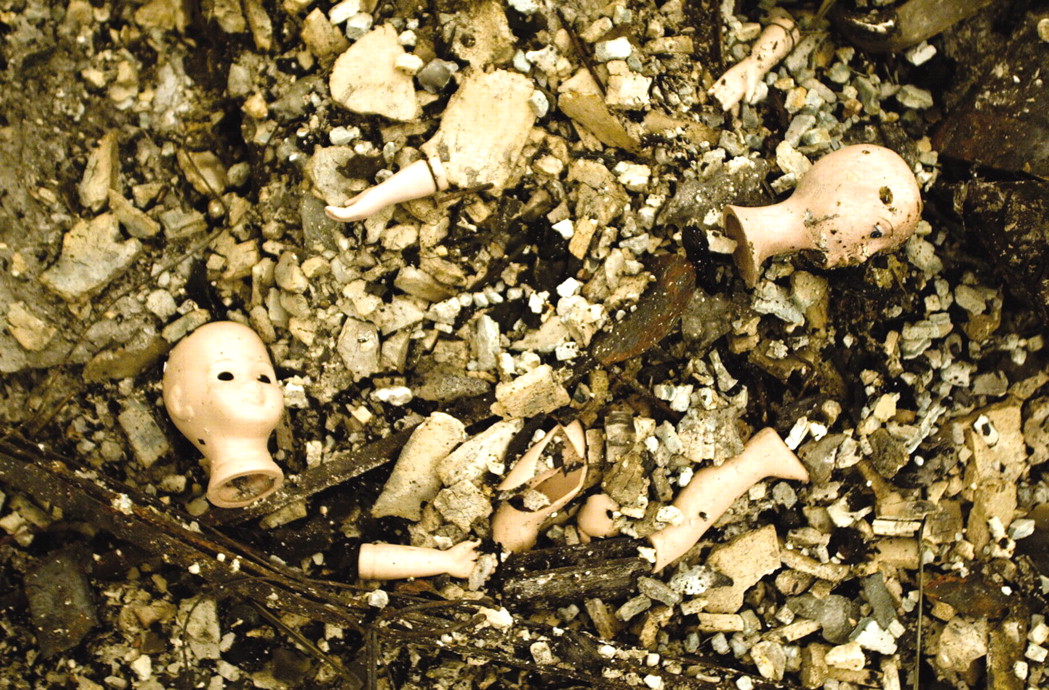Kids’ Response Depends on Parents’ Reaction

Incinerated toys lie among the remains of a San Diego home destroyed by fire in October. The Scripps Ranch area was one of the hardest hit by wildires, with over 350 homes destroyed. (Photo by Donald Miralle/Getty Images)
“Beyond the effects on survivors of the firestorm-related deaths, the loss of a person’s home psychologically represents the loss of a safe place and family identity,” Smith told Psychiatric News.
The SDPS issued a public-service announcement to the media last month to alert citizens of San Diego County affected by the wildfires how to obtain free mental health services, said Smith.
At least 15 SDPS members have volunteered to conduct mental health assessments for children and adults, make referrals to outpatient and hospital facilities, and consult to hospitals, schools, and relief agencies, noted executive director Paula Margulies.
Gabrielle Shapiro, M.D., is an SDPS member and president-elect of the California Academy of Child and Adolescent Psychiatry, as well as a member of the American Academy of Child and Adolescent Psychiatry’s Disaster Committee.
Last month she met with students at a private school attended by some children who lost their homes to the fires. “By giving the students time to talk about the wildfires, we learned they were worried about more wildfires occurring and losing their homes and pets. We talked about how to evacuate quickly and safety issues, including when to leave pets and other possessions behind,” said Shapiro, whose children attend that school.
The San Diego County fire was reportedly started by a lost hunter who threw up flares. “We also talked about how to dispose of matches safely and other practical fire-safety tips,” said Shapiro.
At least 22 percent of the children who participated in a recent multisite study of the impact of residential fires said they had never had fire-safety training, according to Russell Jones, Ph.D., an expert on residential fires who presented the preliminary results of the study at the October meeting of the International Society of Traumatic Stress Studies in Chicago.
The study, involving 150 families, was funded by the National Institute of Mental Health, said Jones, a professor of psychology at Virginia Polytechnic Institute and State University.
In addition, 85 percent of the children reported that experiencing a house fire was traumatic. Thirty percent of the children said that they should have been able to prevent the fire (for example, by checking the smoke detector or fire alarm), 18 percent felt that they had done something to cause the fire, and 16 percent believed they should have done something more to stop the fire from spreading, said Jones.
He read a child’s account of returning home after a fire from a book chapter he cowrote on the impact of residential fires on children and their families. The book, Helping Children Cope With Disasters: Integrating Research and Practice, was published last year by the American Psychological Association.
“When we got to the house, the street was covered with fire trucks,” the child said. “I couldn’t really see the house because of all of the smoke, but I could see that a big chunk of the house was gone. I still wasn’t upset at that point. I was really shocked; it was too much like a bad dream story, and I would wake up from it at any second. Almost everything was gone. There was still smoke, and everything was covered in black soot or tar. Our pets had all died.”
Children’s ability to cope with residential fires, Jones’s study found, depends in large part on their parents’ reactions and family cohesiveness, he said.
Shapiro added, “Regaining normalcy in their lives by returning to school, seeing family and friends, and having appropriate outlets to express their feelings can assist children with coping with their losses. Most children are resilient if they had good premorbid functioning.” ▪



